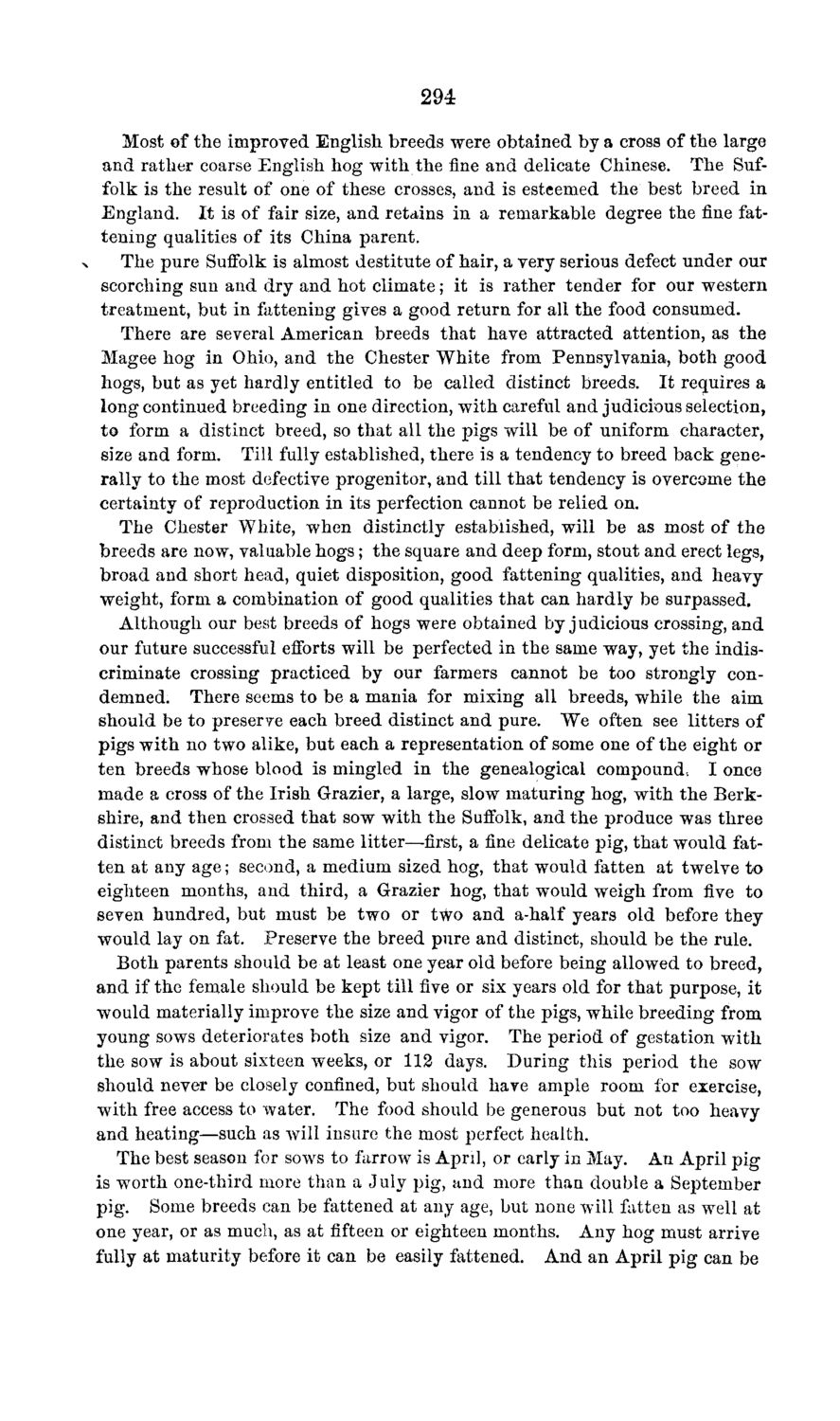| |
| |
Caption: Board of Trustees Minutes - 1869
This is a reduced-resolution page image for fast online browsing.

EXTRACTED TEXT FROM PAGE:
294 Most of the improved English breeds were obtained by a cross of the large and rather coarse English hog with the fine and delicate Chinese. The Suffolk is the result of one of these crosses, and is esteemed the best breed in England. It is of fair size, and retains in a remarkable degree the fine fattening qualities of its China parent. The pure Suffolk is almost destitute of hair, a very serious defect under our scorching sun and dry and hot climate; it is rather tender for our western treatment, but in fattening gives a good return for all the food consumed. There are several American breeds that have attracted attention, as the Magee hog in Ohio, and the Chester White from Pennsylvania, both good hogs, but as yet hardly entitled to be called distinct breeds. It requires a long continued breeding in one direction, with careful and judicious selection, to form a distinct breed, so that all the pigs will be of uniform character, size and form. Till fully established, there is a tendency to breed back generally to the most defective progenitor, and till that tendency is overcome the certainty of reproduction in its perfection cannot be relied on. The Chester White, when distinctly established, will be as most of the breeds are now, valuable hogs; the square and deep form, stout and erect legs, broad and short head, quiet disposition, good fattening qualities, and heavy weight, form a combination of good qualities that can hardly be surpassed. Although our best breeds of hogs were obtained by judicious crossing, and our future successful efforts will be perfected in the same way, yet the indiscriminate crossing practiced by our farmers cannot be too strongly condemned. There seems to be a mania for mixing all breeds, while the aim should be to preserve each breed distinct and pure. We often see litters of pigs with no two alike, but each a representation of some one of the eight or ten breeds whose blood is mingled in the genealogical compound, I once made a cross of the Irish Grazier, a large, slow maturing hog, with the Berkshire, and then crossed that sow with the Suffolk, and the produce was three distinct breeds from the same litter—first, a fine delicate pig, that would fatten at any age; second, a medium sized hog, that would fatten at twelve to eighteen months, and third, a Grazier hog, that would weigh from five to seven hundred, but must be two or two and a-half years old before they would lay on fat. Preserve the breed pure and distinct, should be the rule. Both parents should be at least one year old before being allowed to breed, and if the female should be kept till five or six years old for that purpose, it would materially improve the size and vigor of the pigs, while breeding from young sows deteriorates both size and vigor. The period of gestation with the sow is about sixteen weeks, or 112 days. During this period the sow should never be closely confined, but should have ample room for exercise, with free access to water. The food should be generous but not too heavy and heating—such as will insure the most perfect health. The best season for sows to farrow is April, or early in May. An April pig is worth one-third more than a July pig, and more than double a September pig. Some breeds can be fattened at any age, but none will fatten as well at one year, or as much, as at fifteen or eighteen months. Any hog must arrive fully at maturity before it can be easily fattened. And an April pig can be
| |